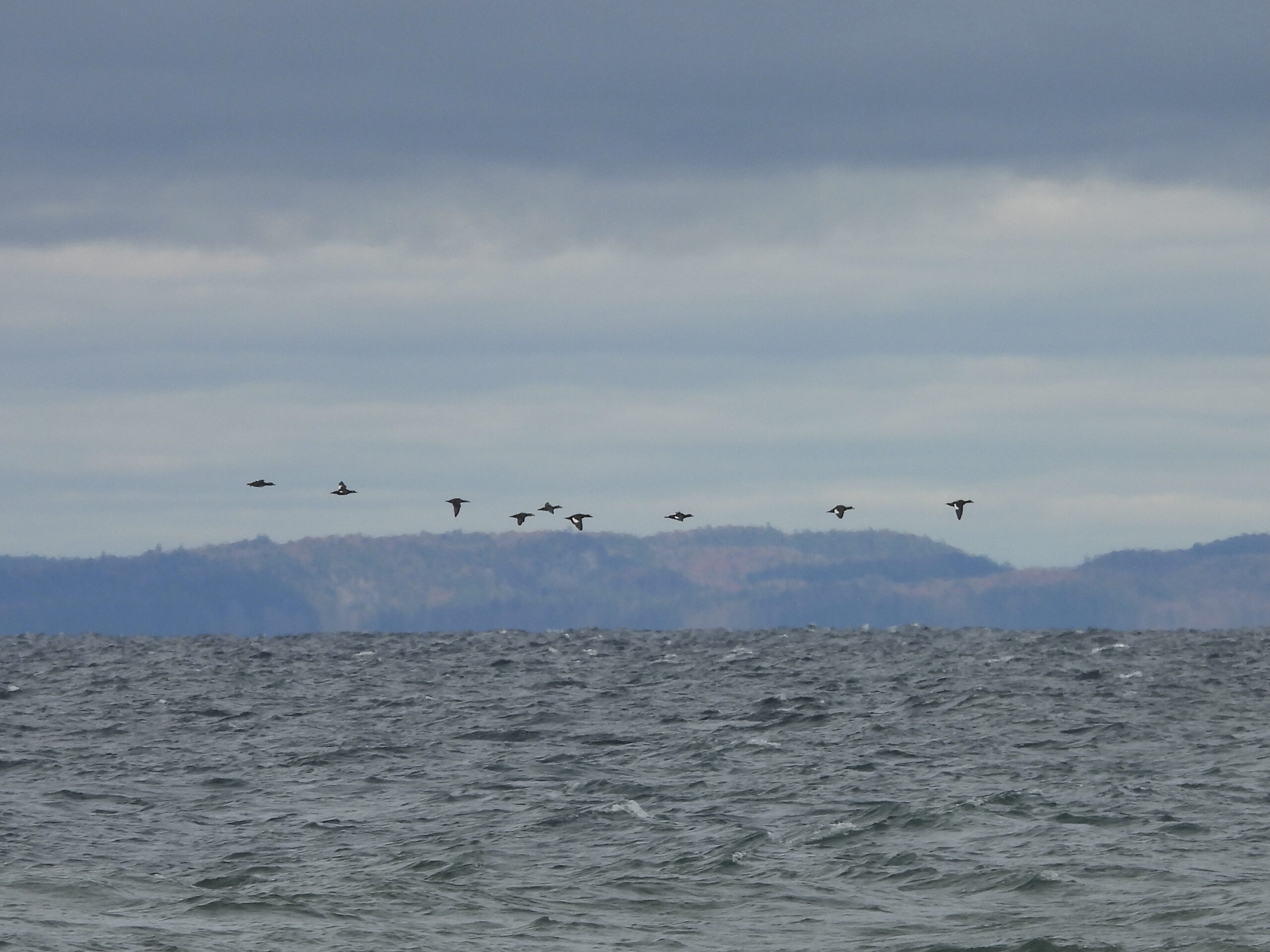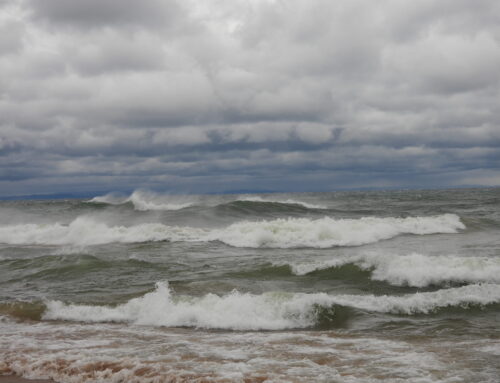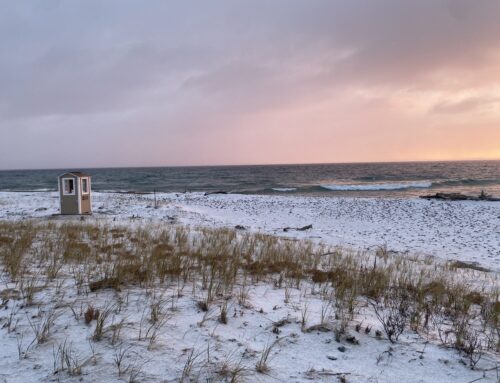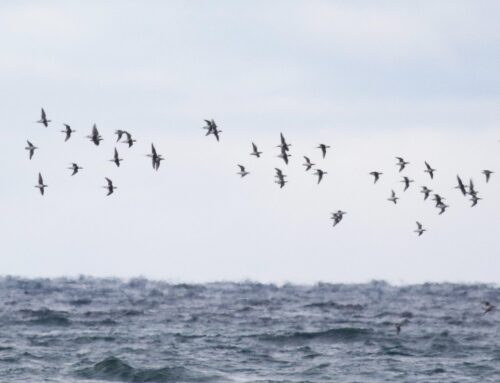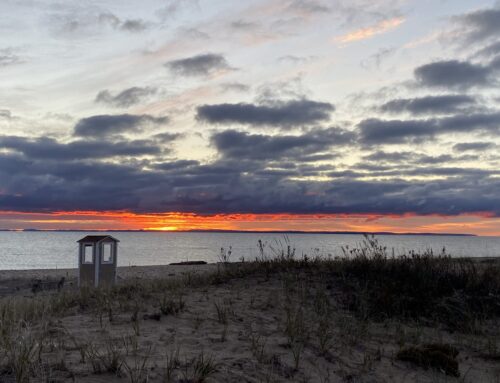October started with a bang at Whitefish Point. Early in the week, we had a continuation of warm weather and southerly winds. Even with these conditions, some waterbirds were moving, including a couple of very notable arrivals. Then on October 6, the temperature dropped nearly 25 degrees and the wind started blowing out of the north. This kind of swing is what we wait all season for, and it didn’t fall short.
The first two days of the week were some of the slowest I’ve had with winds out of the Southeast. On October 3, we had a little relief with Southwest winds instead. That westerly component brought a nice flight of ~2,500 diving ducks (mostly Redhead and Greater Scaup). With those diving ducks, we had an unseasonably late push of almost 300 Common Terns. Southwest winds also have a reputation for bringing songbirds to the point, and this day was no exception, with dozens of Dark-eyed Junco and Golden-crowned Kinglets pouring in off the lake in the morning.
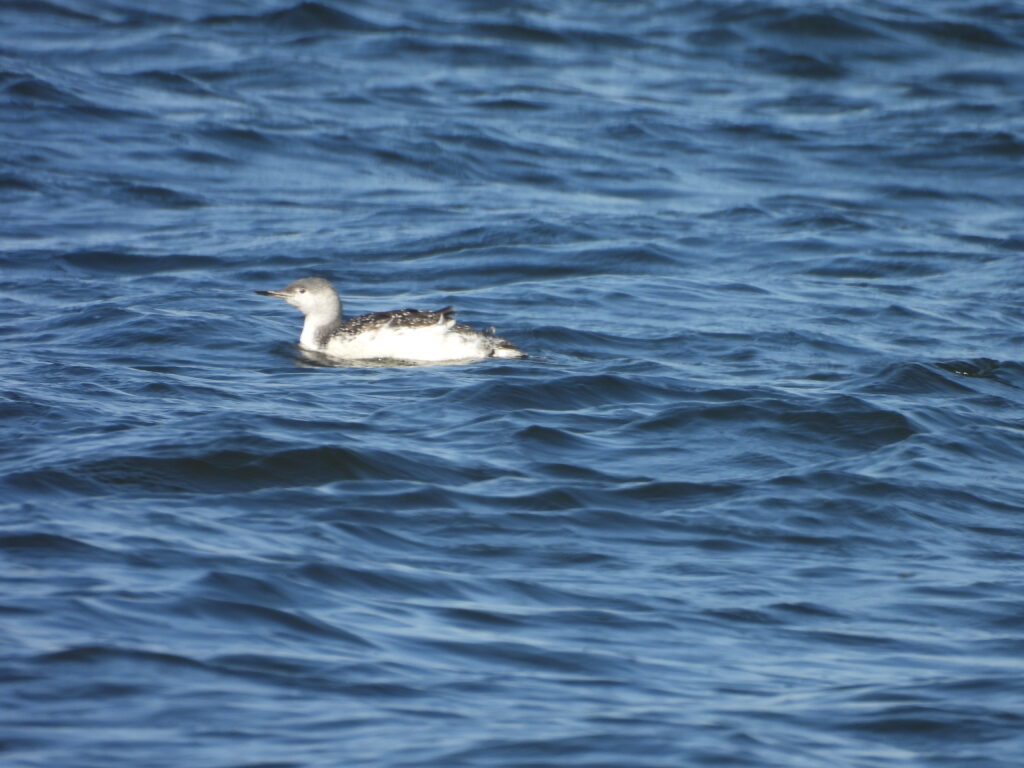
Red-throated Loon. Photo by Frank Fabbro
The real waterbird highlight from October 3 occurred after the count. On my way back from the count, I spent some time wandering in the woods, enjoying the new flocks of sparrows, and visiting the Whitefish Point Harbor. Tucked underneath one of the juniper bushes in the harbor was a juvenile Purple Gallinule! I snapped a couple of photos with my phone and ran back to the car to grab my camera and call some birders. Soon, there was a group of us swatting at mosquitoes and watching in awe as the gallinule strutted down to the edge of Lake Superior. The bird clumsily maneuvered the the rocky shoreline with its oversized yellow feet and picked at grass seeds and mussels until sunset. Sadly, the bird did not stick around another day for others to see. Purple Gallinules and rails in general are known for wandering to far-flung places and this bird represents a first, and perhaps overdue, record for the Upper Peninsula.
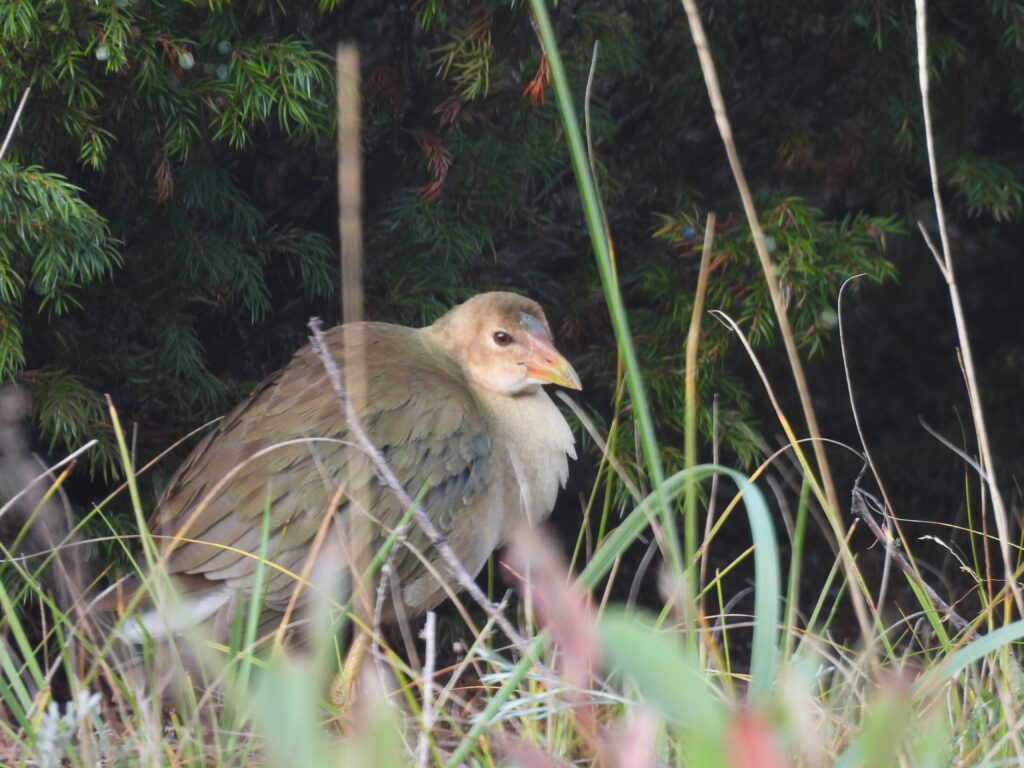
Purple Gallinule. Photo by Frank Fabbro
There were more south winds to follow on the 4th and 5th of October. For me, the highlight from the 4th was a single jaeger that flew by very close in afternoon. Despite getting my best views of the season, this bird proved to be an identification conundrum. It was a dark morph juvenile that Clay photographed quite well, but sending the photos to different experts yielded different opinions. In the end, the consensus seemed to be a Parasitic Jaeger although there were certainly traits that hinted at Pomarine. Birds like this are a fun puzzle to work out and show just how much there is to learn about bird identification! You can see more photos of this bird on eBird. The south winds on October 5 also brought an interesting late wave of aerial insectivores to the point. At the waterbird count, we saw Chimney Swift, Bank Swallow, Barn Swallow, and Cliff Swallow. That afternoon, I also had an adult Franklin’s Gull flyby.
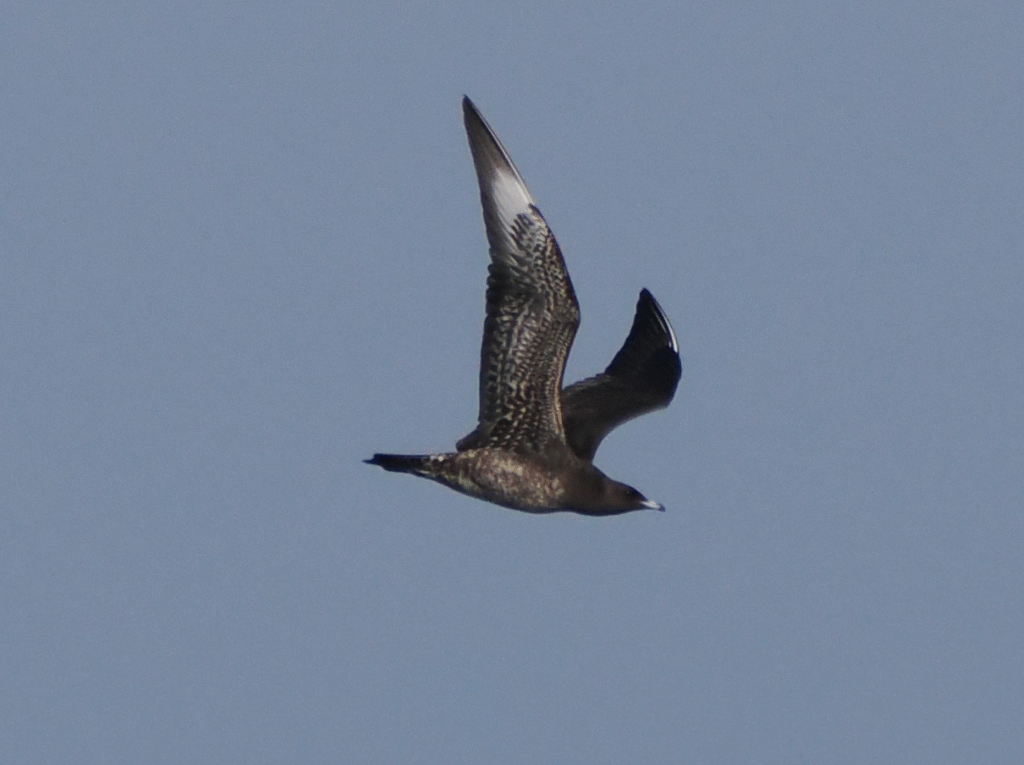
Dark morph juvenile jaeger. Photo by Clay Bliznick
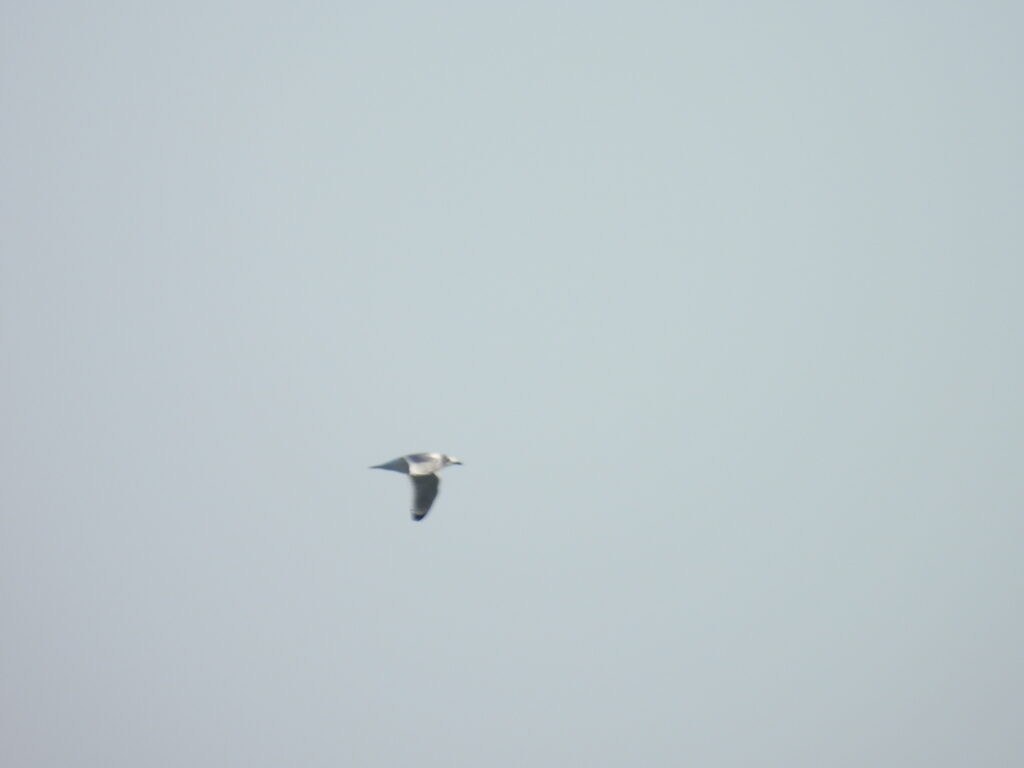
A very very poor photo of the Franklin’s Gull. Photo by Frank Fabbro
October 6 was the big one, and it happened to be my day off from counting. Clay was out at sunrise, and I’ll admit that I waited until the rain stopped to join him around 8:30. At that point, he was in the thick of it with flock after flock of mixed dabbling and diving ducks cruising overhead or zipping along the surface of the lake. Before the day was out, he had tallied 1,089 American Wigeon, 635 Greater Scaup, 417 Northern Pintail, and our first real push of scoters with 139 White-winged and 87 Surf. The ducks kept moving on October 7th with over 1,000 Redhead and triple digits of both scaup species and Red-breasted Mergansers. On that day, we also had our third juvenile Sabine’s Gull of the season fly past with a group of Bonaparte’s Gulls. The Bonaparte’s Gulls have really started moving again this week with 133 individuals after a bit of a lull.
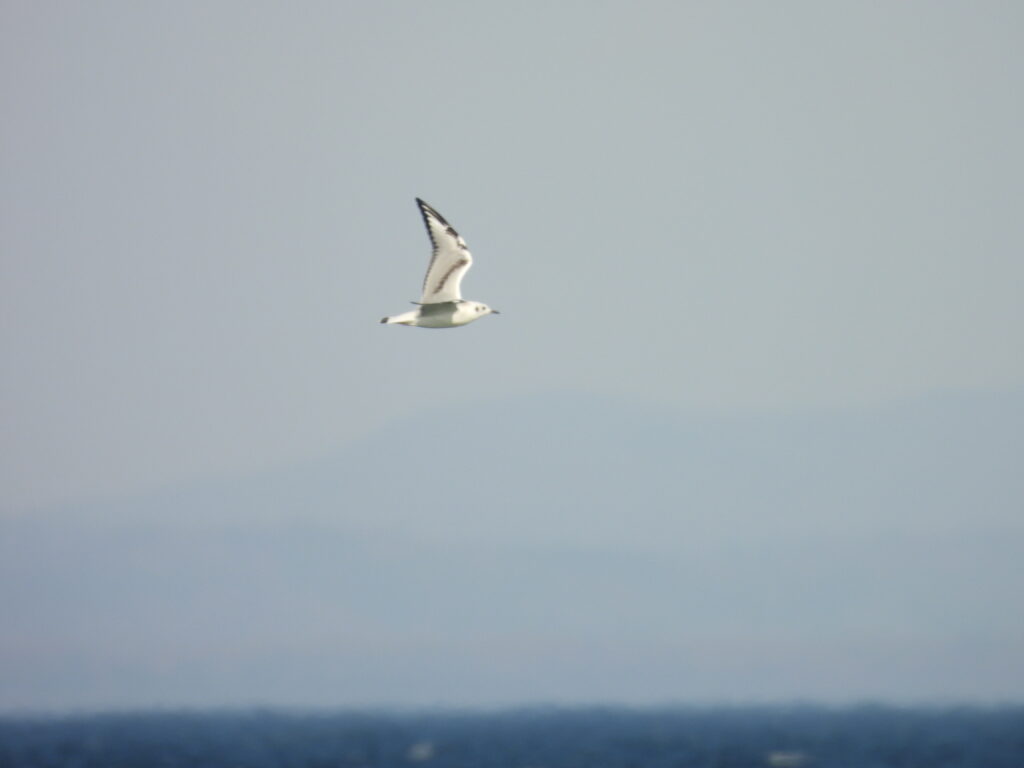
Bonaparte’s Gull. Photo by Frank Fabbro
This is one of my longer blog posts, but there were just too many highlights to skim over this week. I think it’s safe to say that October is the best month of fall at Whitefish Point, and I’m excited to see what else we have coming up.
~Frank Fabbro, 2025 Fall Waterbird Counter
Featured Photo: Mixed flock of White-winged and Surf Scoters
You can now see the waterbird count data on Trektellen! Check it out at trektellen.nl/count/view/4209.
You can keep up with the 2025 Fall Waterbird Count by reading Frank’s weekly blog posts and following WPBO’s social media (Facebook, Instagram, and X). The fall waterbird count runs August 15 through November 15.
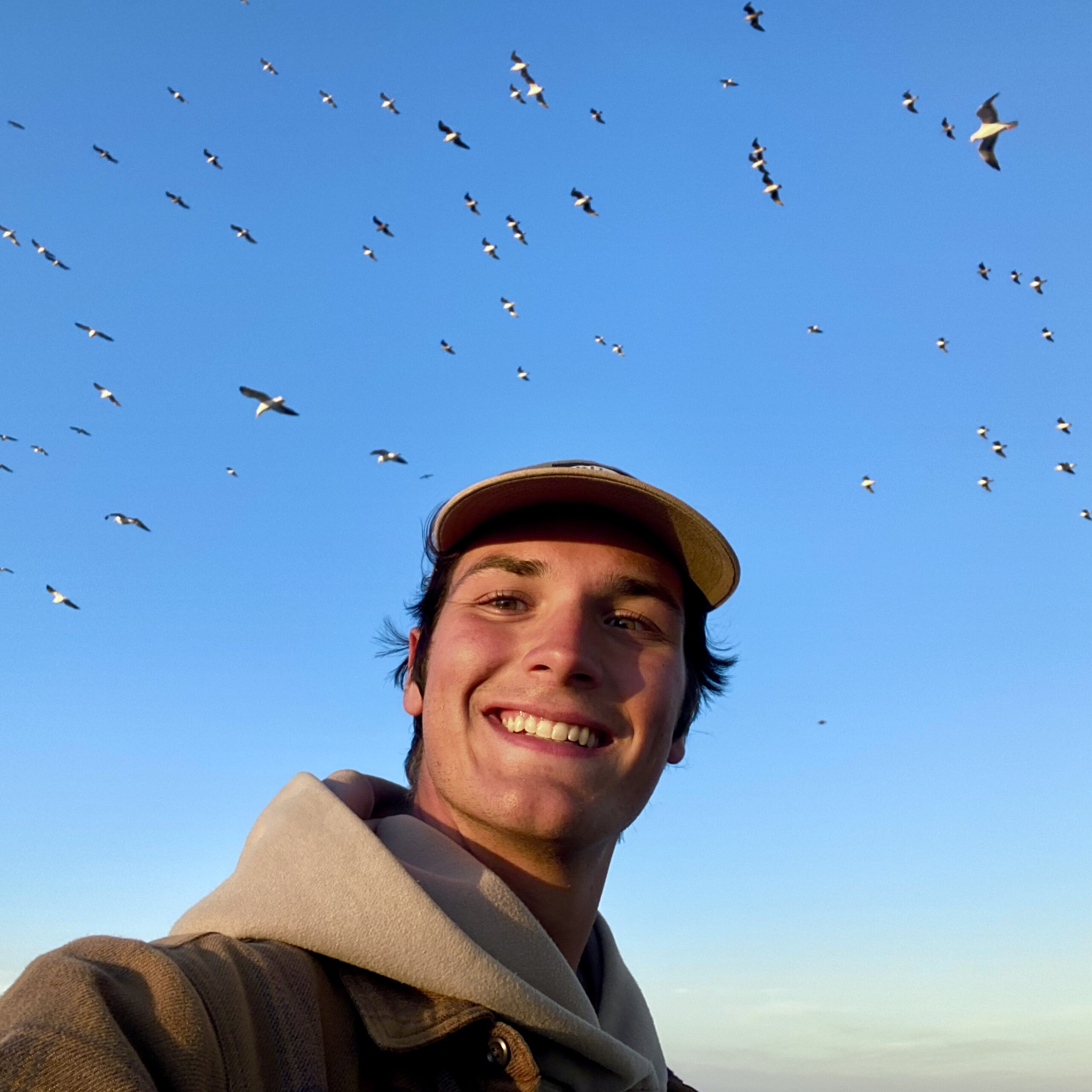
Frank Fabbro: 2025 Fall Waterbird Counter
Frank is an avid birder who was first introduced to the spectacle of bird migration along the Mississippi Flyway in his home state of Minnesota ten years ago. Since then, he has pursued his passion for birds, and the amazing places they inhabit, across the country and around the world. He studied Wildlife Biology and Landscape Restoration at the University of California, Davis, and since graduating has worked on a variety of bird-related projects, ranging from Spotted Owl surveys to prairie-chicken tagging and counting migrating seabirds. He’s excited to be back in the Northwoods, once again experiencing the excitement of fall migration along the shores of Lake Superior.

